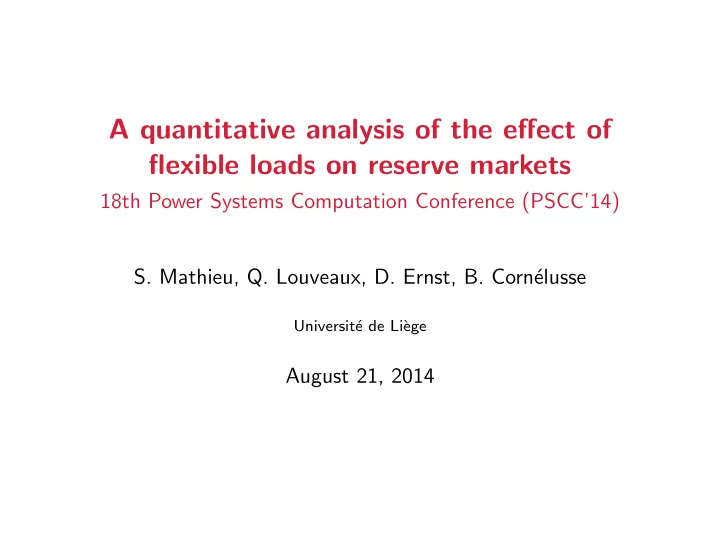

A quantitative analysis of the effect of flexible loads on reserve markets 18th Power Systems Computation Conference (PSCC’14) S. Mathieu, Q. Louveaux, D. Ernst, B. Corn´ elusse Universit´ e de Li` ege August 21, 2014
Outline Introduction Model of the system Interaction model Agent-based modeling Model of the actors Market operator System operator Retailer Producer Simulation General view Results Conclusion S. Mathieu, Q. Louveaux, D. Ernst, B. Corn´ elusse , A quantitative analysis of the effect of flexible loads on reserve markets 2/18
Introduction Electricity is a complex commodity. ◮ Few possibilities of storage . ◮ Every second , production must equal consumption . ◮ Ensured in practice by the following steps: 1. Before real-time , actors trade expected quantities and 2. the system operator contracts reserve in case of mismatch. 3. In real-time , the system operator ensures the balance by activating the reserve . 4. Actors pay an imbalance fee proportional to their quantity of imbalance. Historically, reserve has always been provided by production units. Objective of the paper Quantify the impact of the introduction of flexible loads in the secondary reserve market . S. Mathieu, Q. Louveaux, D. Ernst, B. Corn´ elusse , A quantitative analysis of the effect of flexible loads on reserve markets 3/18
Outline Introduction Model of the system Interaction model Agent-based modeling Model of the actors Market operator System operator Retailer Producer Simulation General view Results Conclusion S. Mathieu, Q. Louveaux, D. Ernst, B. Corn´ elusse , A quantitative analysis of the effect of flexible loads on reserve markets 4/18
Recommend
More recommend